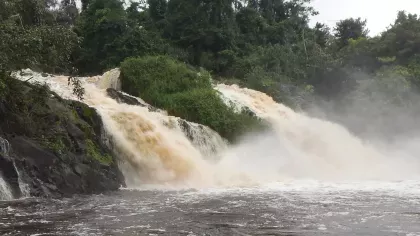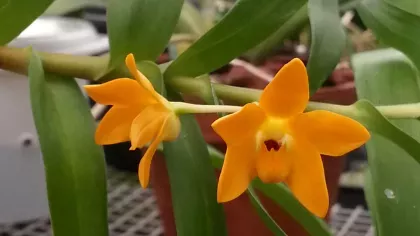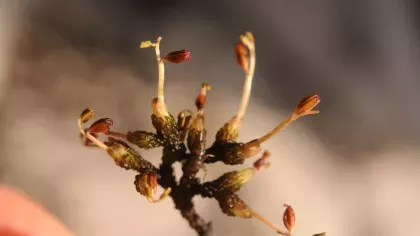6 January 2022
Top 10 species new to science in 2021
Here are 10 highlights from 205 plants and fungi officially named in 2021, plus the first plant named in 2022.

In 2021, Kew scientists and our partners worldwide named approximately 205 plants and fungi from Africa, Asia, the Americas and even here in the UK.
The identification of plants is still a big problem in the tropics and thousands of species remain without scientific names.
In contrast, new species of fungi can be found almost anywhere, and two million or more, are thought to be awaiting discovery by science.
This is a problem because until a species has a scientific name, assessment of its extinction risk is near impossible, and that makes protection from extinction, and research into their properties, incredibly difficult.
Sadly, several species in 2021’s list are already considered as under threat of extinction from increasing threats to their natural habitat and three are already believed to be extinct in the wild.
Some of these new to science species could be important for people and planet – providing vital income to communities, or the potential to be developed into a future food or medicine, or simply to keep the habitat around them thriving.
This list is another reminder that this is our last chance to find unknown species, name them and hopefully protect them before they become globally extinct.
From a ghost orchid that grows in almost complete darkness to a fungus with teeth, here are 10 highlights.
Plus, published today is the first plant species, Uvariopsis dicaprio, named new to science in 2022...
1. Killer tobacco plant
Seven new-to-science species of Nicotiana (wild tobacco) were described in 2021 by Kew scientist Mark Chase and his collaborators at Curtin University and University of Vienna.
One of the species, Nicotiana insecticida, has sticky glands covering all its surfaces that regularly snare and kill small insects such as gnats, aphids and small flies.
It is the first time a wild tobacco species has been reported to trap and kill insects.
The seeds of N. insecticida were collected at a truck stop on the Northwest Coastal Highway in Western Australia and cultivated in the greenhouses.
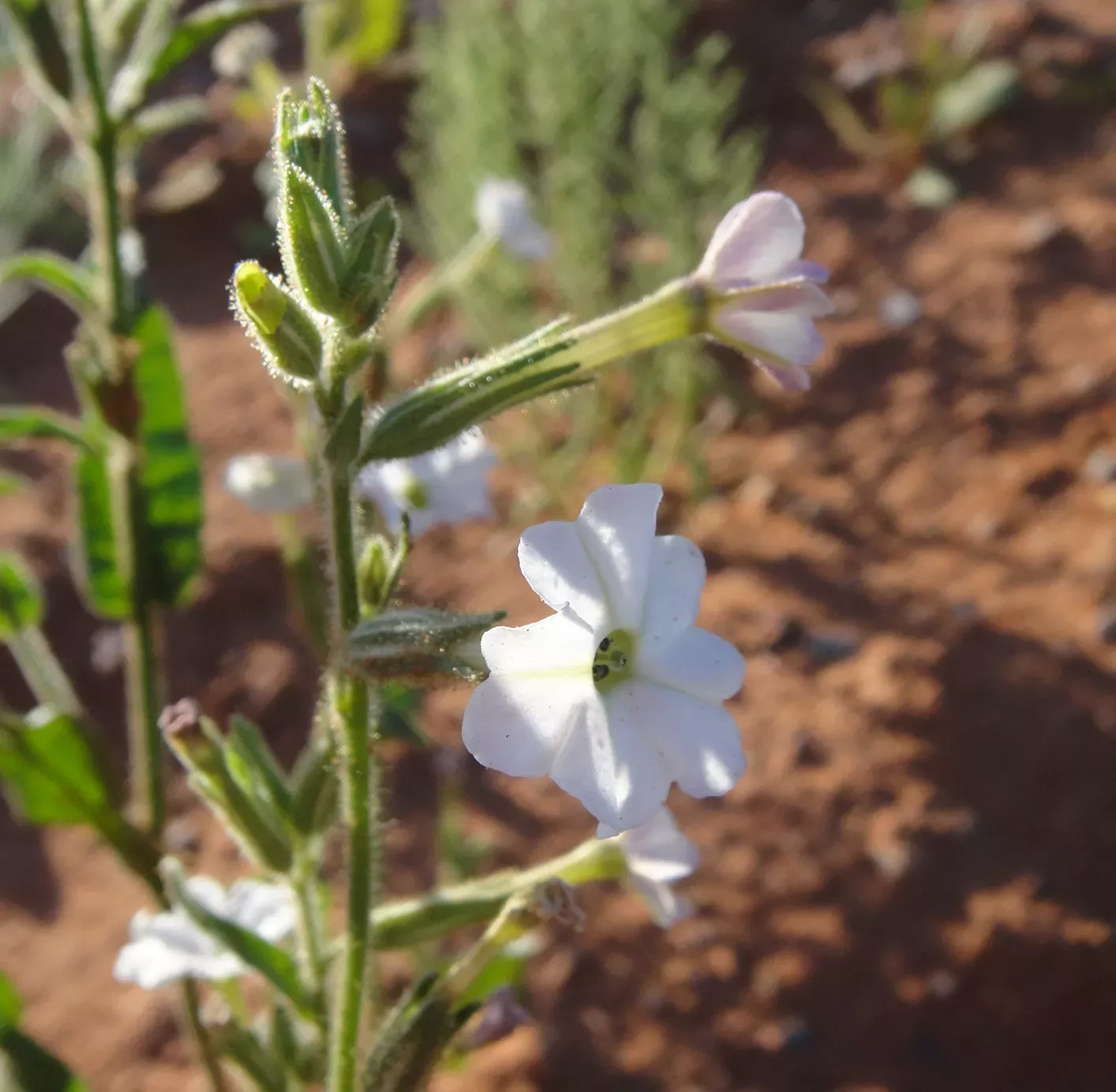
2. The hidden banana seed fungus
One of the most unexpected species in the 2021 list is a microscopic new fungus, Fusarium chuoi, found growing in a banana plant seed in our Millennium Seed Bank.
The species was described by a group of scientists from the Westerdijk Institute in the Netherlands, the Plant Resources Centre in Vietnam and Kew.
It is the first time a new species of fungi has been described from our seed collections.
Kew scientists found it by placing seeds on agar under sterile conditions, which allowed the fungus inside to grow out and be isolated in the lab.
Named for the Vietnamese word for banana, ‘chuoi’, reflecting the country and plant host where it was found, F. chuoi is what is known as an endophyte – a microscopic fungus that lives inside a plant without causing it any visible harm.
Finding new endophyte species and understanding if and how we can tell them apart from pathogens is crucial for protecting plant health.

3. Ghost orchid
Kew scientists Johan Hermans and Phill Cribb described 16 new species of orchid, all from Madagascar, in collaboration with with Landy Rajaovelona and Malagasy researchers at the Kew Madagascar Conservation Centre.
One of these is a fascinating ‘ghost’ orchid, Didymoplexis stella-silvae, named by Hermans as the ‘star of the forest’ as it grows in almost complete darkness and has star-like flowers.
The orchid is leafless and depends entirely on fungi for its energy.
It’s unique bright white flowers only open immediately after rain before disappearing 24 hours later.
Unfortunately, three of these 16 new species were already thought to be extinct in the wild before they were officially published in scientific papers, due to destruction of their habitat.
This includes a tree-dwelling orchid, Aerangis bovicornu, likely eradicated due to clearance of its forest habitat for the cultivation and production of geranium oil, which is in high demand in Europe for aromatherapy; Habenaria crocodilium, first found by a crocodile enclosure that is now thought to be lost to a climate change driven flash flood; and a third, likely extinct in the wild, Bulbophyllum cochinealloides, which survives only as one plant in cultivation in Europe.

4. Beautiful blue Barleria
A beautiful blue Barleria - B. thunbergiiflora – was named new to science in 2021 after being collected by Kew scientist David Goyder on a National Geographic expedition to Angola.
National Geographic supports scientific expeditions to remote, biologically unknown areas of the world to uncover spectacular new species such as this pretty tropical flower.
Kew's Iain Darbyshire and colleagues from Namibia and USA named the plant after the showy genus of flowering plant Thunbergia, after noticing a likeness in their flowers.
The Barleria only grows in three sites in high elevation grassland on Kalahari sands, a large sand sea that extends from the northern Cape Province, South Africa, towards the equator.
The species was one of six new species of Barleria published last year from Angola and Namibia.

5. A pretty Cape primrose at risk of extinction due to copper mining
Five new species of Cape primroses (in the genus Streptocarpus) were named new to science in 2021 from the Democratic Republic of Congo.
Streptocarpus plants are commonly cultivated around the world as houseplants, but in the wild many are highly localised, making them vulnerable to extinction, especially if they grow on areas of land in demand by humans for development.
This is the case for one of the five new species, Streptocarpus malachiticola, from Katanga in Congo.
The Latin meaning of its name means ‘growing on malachite’ – malachite is an ore of copper, and it is regularly extracted from mines found in this area of the country, the main mining province for Congo.
With global copper prices at an all-time high due to demand for electrical wiring (electric vehicles require up to 80kg of copper to build), this sadly means the species, restricted to just three locations, is assessed as Endangered under the Red List criteria of the International Union for Conservation of Nature (IUCN).
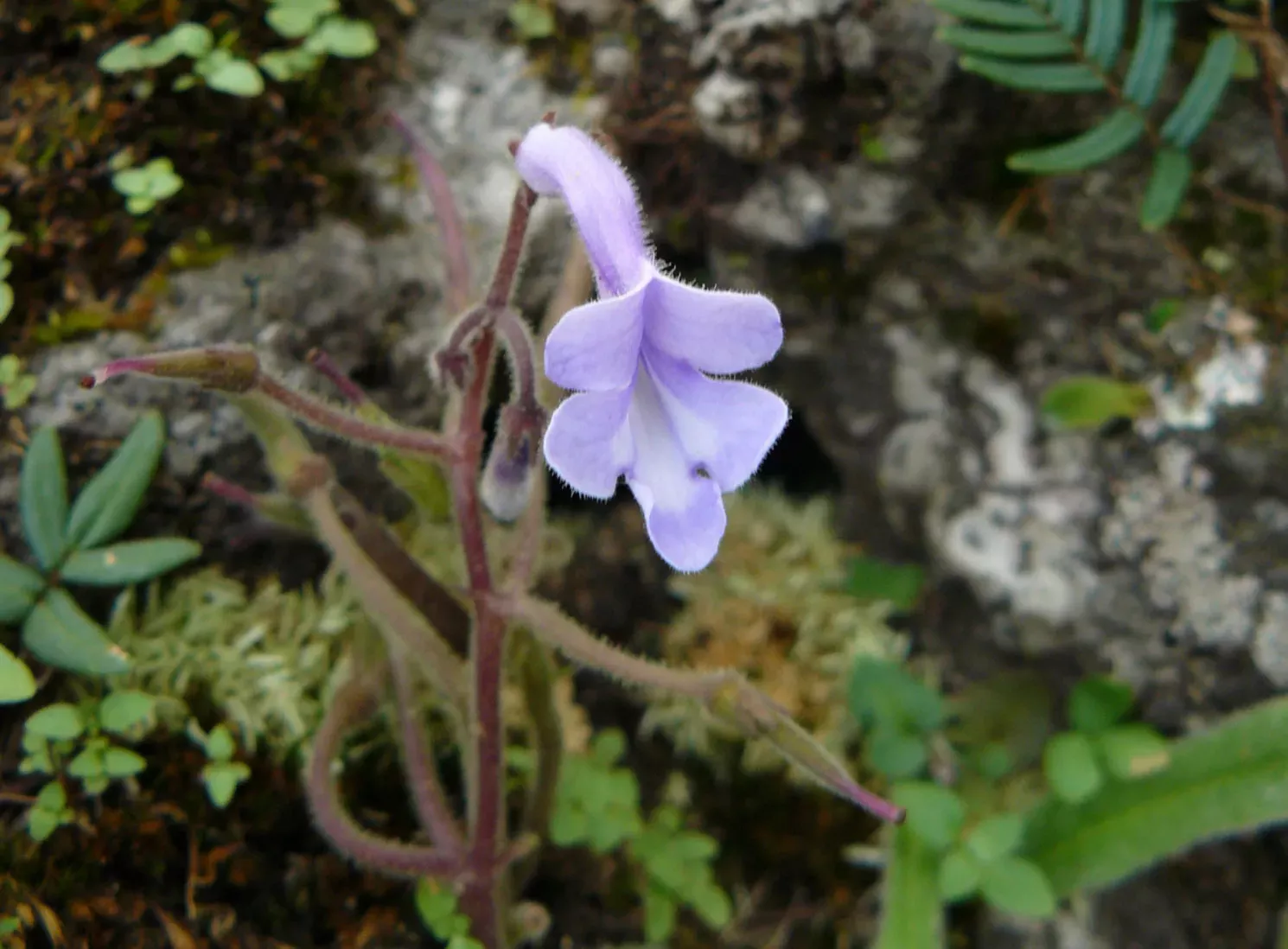
6. Firework flower
Named for its resemblance in flower to an exploding firework, this new species, Ardisia pyrotechnica, was named by a group of Malaysian and Japanese scientists in collaboration with Kew's Tim Utteridge.
The spectacular plant, a member of the primrose family, was found in the forest in Borneo and grows up to four metres tall.
Unfortunately A. pyrotechnica is already assessed as Critically Endangered under IUCN criteria, as it has only been found growing in two locations with a handful of plants and is under threat from plantations of palm oil.
Around 700 species of Ardisia are known throughout tropical and subtropical rainforests, many rare and threatened with extinction, and new finds are made most years.
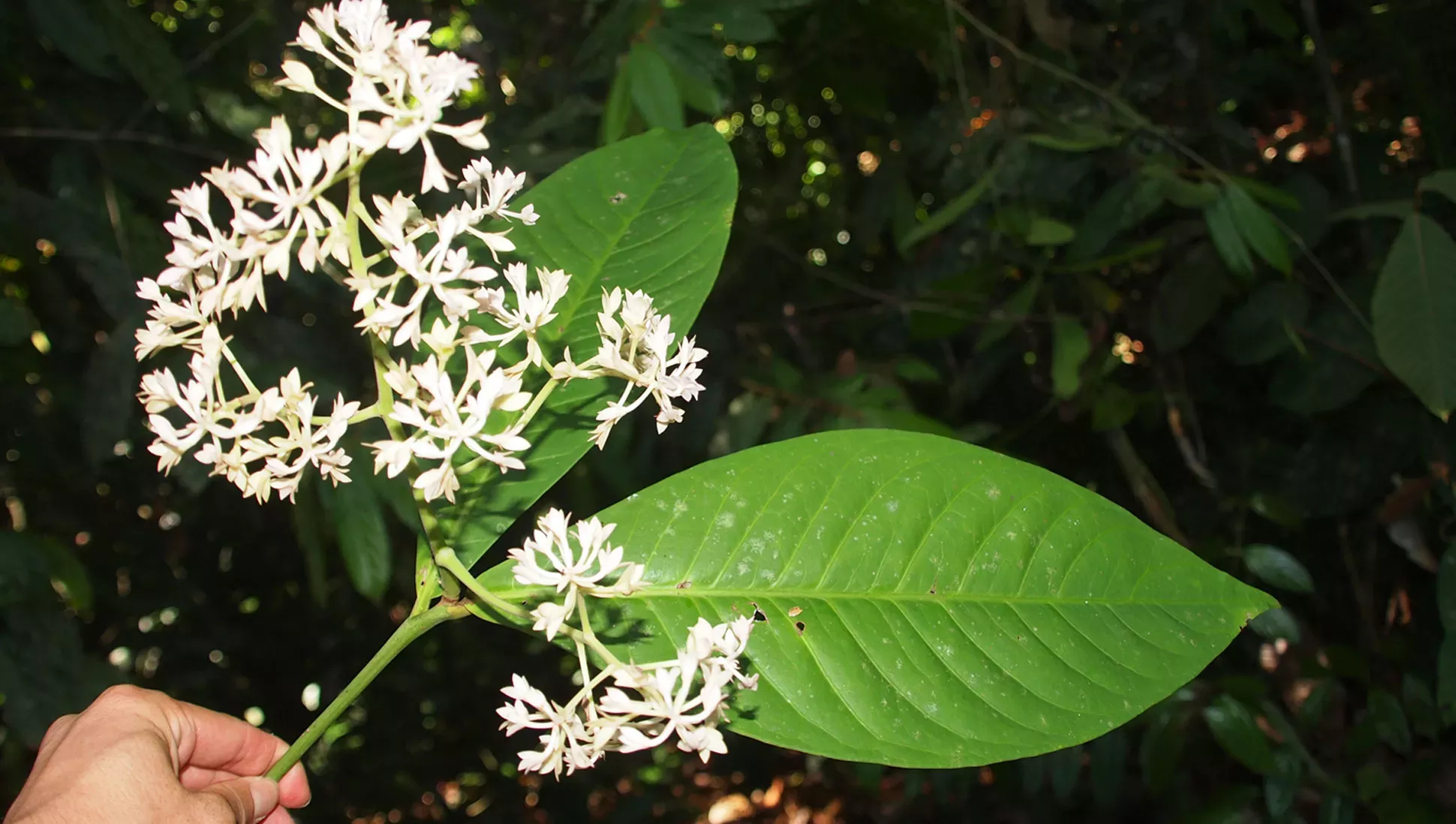
8. Bolivian periwinkle
Philibertia woodii is a vivid and unusual periwinkle found in the Andean valleys in Bolivia.
It was collected in the wild and named new to science by Argentinian botanist Hector Keller and Kew's David Goyder.
The new bright, yellow-flowered plant has egg-shaped kiwi-like fruits that are edible when roasted, and its vivid and attractive flowers are popular with butterflies.
Many species in the periwinkle family are medicinal. For example, anticancer drugs have been derived from chemical compounds identified in the Madagascar periwinkle.
It is hoped the compounds of this species will be analysed for their potential.
Keller and Goyder named the species for John Wood, a botanist, to honour his dedication to training Bolivian botanists and supporting botanical expeditions in Bolivia for many decades.

7. A fungus with teeth
Hydnellum nemorosum is a rare tooth-fungus in the UK. Found growing in moss in Windsor Great Park under a sweet chestnut tree in 2008, this species was only described in 2021.
A DNA-based analysis of European specimens carried out at Kew with collaborators in Wales and Sweden revealed that Windsor is its only known site in Britain — so it has already been proposed for inclusion on the IUCN global Red List of threatened species and for legal protection under the Wildlife and Countryside Act in Britain.
Instead of gills, tooth fungi have tooth-like structures that produce spores.
They thrive in poor soils with low nitrogen levels and have a mutually beneficial partnership with living tree roots, swapping soil minerals for leaf sugars.
Their populations have declined across Europe due to habitat loss and elevated levels of nitrogen in the air.
Today they are recognised as threatened with extinction at global and national levels and are prioritised for conservation and protection.

9. Voodoo lily
This extremely rare species, Pseudohydrosme ebo, is restricted to a small corner of the vast and amazingly diverse Ebo Forest of Cameroon, home to the Banen people, threatened gorillas, chimpanzees, forest elephants and 75 threatened species of plants, of which eight are unique to the forest.
The voodoo lily flowers from an underground tuber when its leaves have died back, and the flower spike can reach 30 cm in height.
It is the only member of the genus in Cameroon, with all the other species found in neighbouring Gabon.
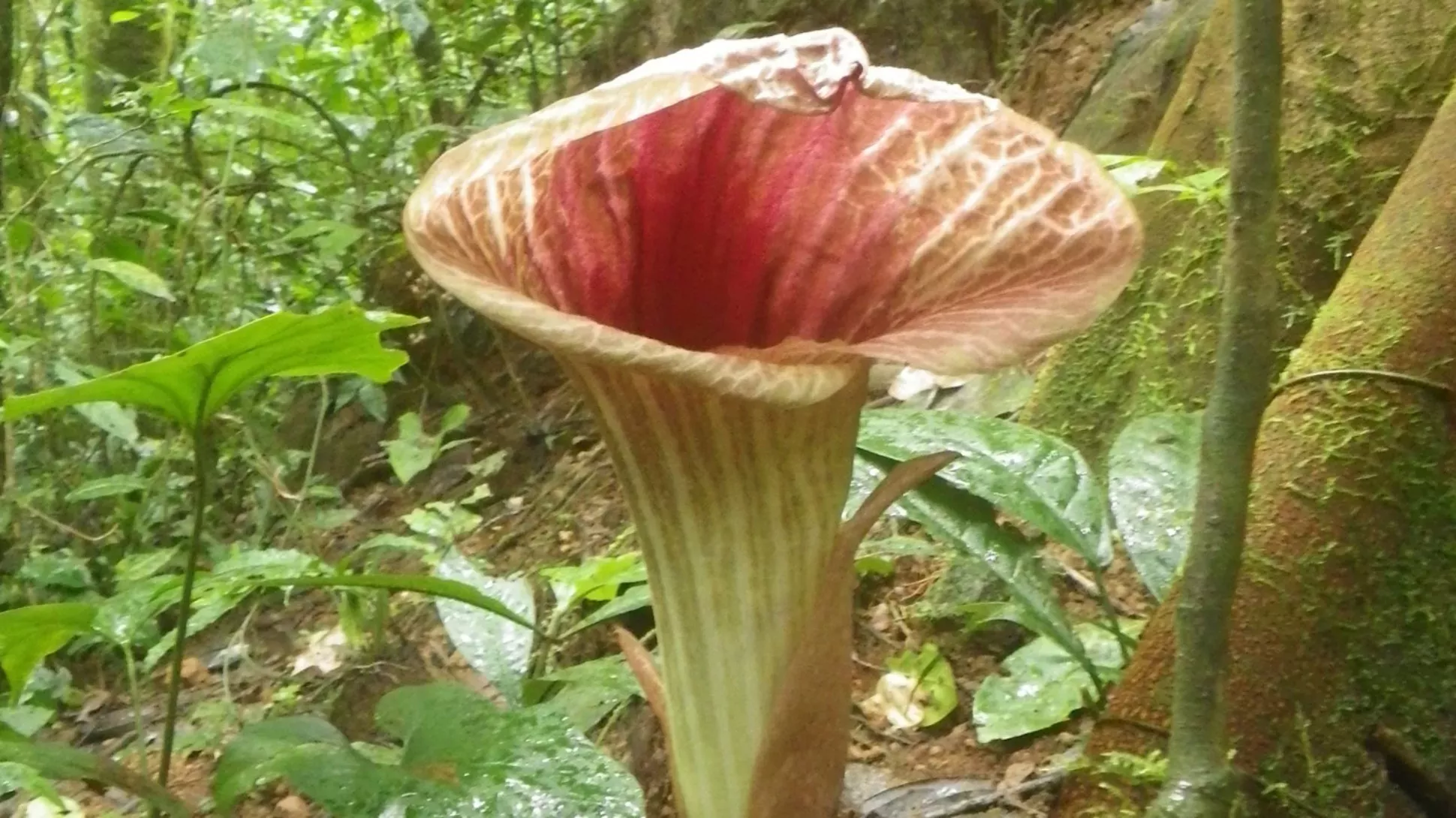
10. Painted by Marianne North in 1876, and named in 2021
Fourteen species new to science of bright-blue-fruited rainforest shrubs in the coffee family, Rubiaceae, were recognised, named and published in 2021 by scientists from Kew and Queen Mary University of London.
Incredibly, one of these is thought to be the first of the Bornean Chassalia species ever to be illustrated – in an oil painting from 1876 by the eminent Victorian artist Marianne North.
At the time of the painting, Marianne was staying in Kuching on the Sarawak River with the Rajah and Ranee of Sarawak.
Today the painting is preserved as one of more than 800 by North in the Marianne North Gallery in Kew Gardens.
So far as we know, the first herbarium specimen (which is needed to characterise the species) of this plant was not collected until 1973, nearly 100 years later.
Lead researcher on the study, Tianyi Yu who was previously a MSc student at Kew, named the species Chassalia northiana in Marianne’s honour, only the fifth plant species to bear her name.
Twelve of the 14 new species have small geographic ranges in Borneo, meaning they are potentially threatened by habitat clearance, but fortunately several of these areas are already protected as national parks.
In contrast, the other two species are widespread across Borneo and so are unlikely to be threatened.

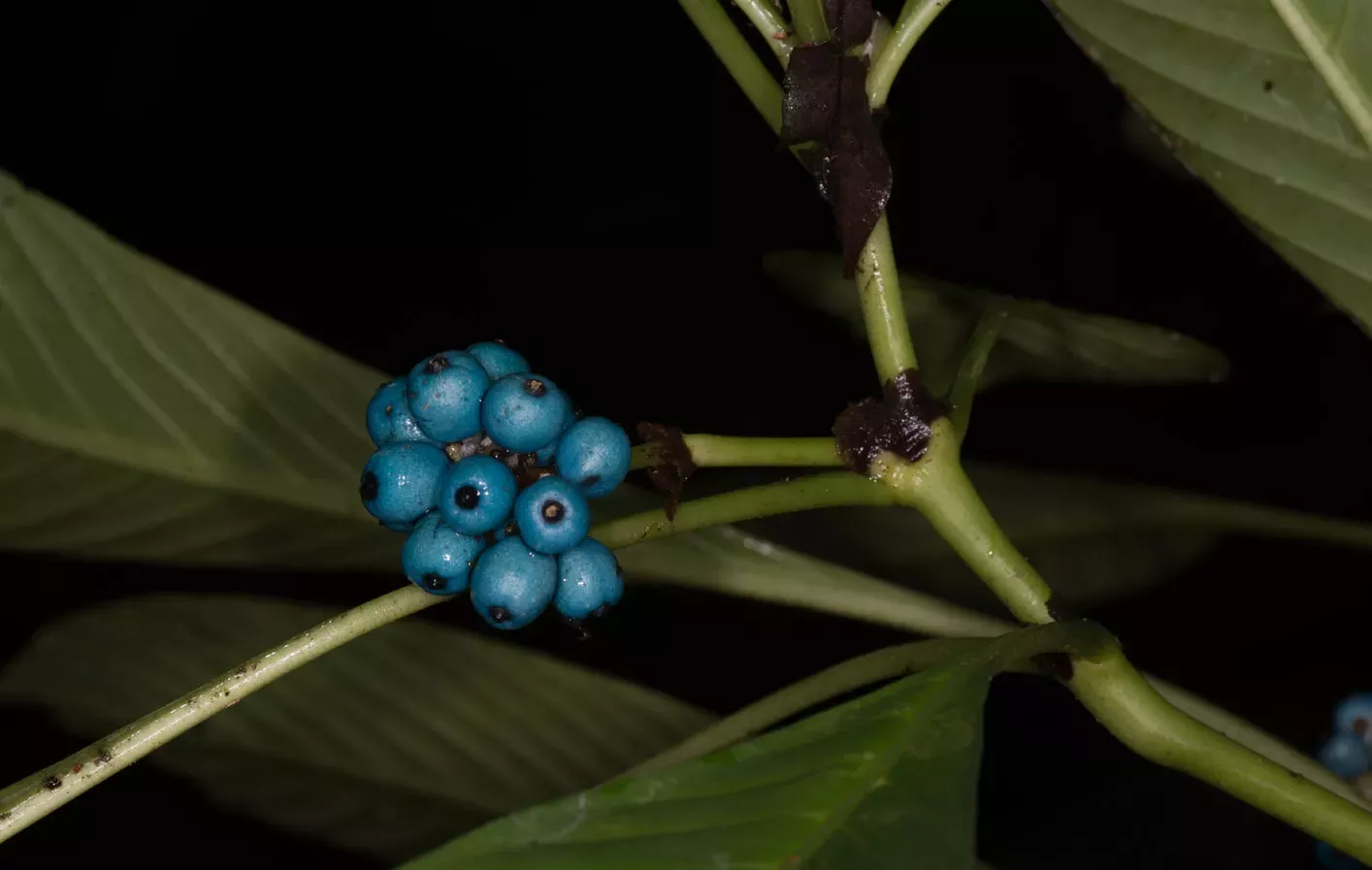
New for 2022: the Uvariopsis dicaprio tree
A tropical tree from Ebo Forest in Cameroon is the first addition to Kew’s 2022 new species list and is published today in leading journal PeerJ.
A member of the ylang-ylang family, the new to science species, Uvariopsis dicaprio, was named after actor and environmentalist Leonardo DiCaprio by a group of international scientists from Kew and the National Herbarium of Cameroon.
The tree, collected by Kew scientist Lorna MacKinnon, is four metres tall with bunches of large, glossy, bright yellow-green flowers on the trunk.

The scientists chose to name the new tree in honour of DiCaprio after he played an important part in lobbying effort to revoke a logging concession for the precious Ebo Forest in February 2020 via social media.
The cancellation of the concession in August 2020 by the President of Cameroon gave hope that the many unique and threatened species in the forest would escape the extinction they would have otherwise faced.
Ebo Forest is one of the largest intact rainforests in Cameroon, home to incredible wildlife, but has previously been relatively unknown to botanical science.
Scientists at Kew with their partners at the National Herbarium of Cameroon have been documenting the incredible array of plant species in Ebo Forest and collecting data, supporting the San Diego Zoo Wildlife Alliance who have been leading efforts with local communities to protect the forest for almost twenty years.
Sadly, U. dicaprio is already assessed in the paper as Critically Endangered, because the forest habitat it occurs in remains unprotected meaning threats of logging and conversion of the habitat to plantations remain, and mining is an additional threat.
This newly named tree species is part of Kew’s Cameroon TIPAs (Tropical Important Plant Areas) project with the National Herbarium of Cameroon, supported by Players of People’s Postcode Lottery.


